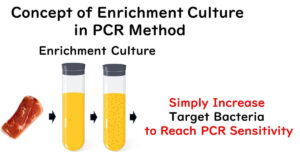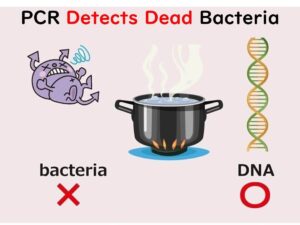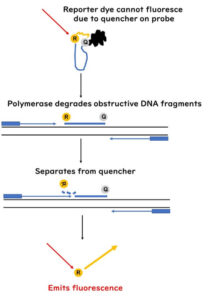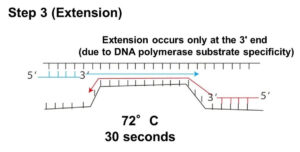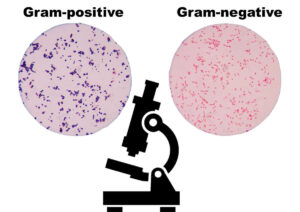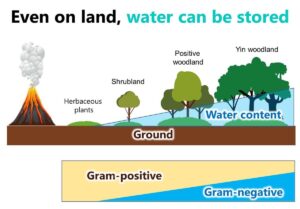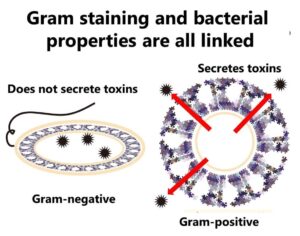The Critical Role of Enrichment Culture in PCR Food Testing
Enrichment culture plays a pivotal role in the accuracy and reliability of PCR testing in food microbiology. This page delves into the essentials of enrichment cultures, highlighting their importance in amplifying target bacteria to detectable levels, overcoming growth challenges, and addressing blind spots during the enrichment process. By mastering these concepts, food safety professionals can enhance the effectiveness of PCR-based microbial detection.
Understanding the Limits of PCR Detection in Food Microbiology
PCR detection is a powerful tool in food microbiology, offering precision in microbial DNA detection. However, it also presents limitations that can impact accuracy and reliability. This page delves into critical challenges, including the detection of dead bacterial DNA, blind spots in gene detection, and the risks of false positives and negatives. By recognizing these limitations, food safety professionals can make informed decisions and implement strategies to enhance testing reliability.
Mastering PCR Primer Design for Accurate Microbial Detection in Food Microbiology
PCR primer design is a cornerstone of accurate and reliable microbial detection in food microbiology. This article explores essential principles, including optimal primer length, GC content, Tm value, and strategies to avoid common issues like primer dimers. Master these concepts to elevate the precision and efficiency of your PCR-based testing.
PCR Testing in Food Microbiology: Key Principles, Benefits, and Applications
PCR testing in food microbiology offers unmatched advantages over traditional culturing methods, particularly in terms of speed and precision. However, without a proper understanding of the technical aspects and risks associated with PCR, unexpected pitfalls may arise. This article delves into the fundamental principles of PCR, its applications in detecting microorganisms, and the key considerations for effective use in food safety.
Real-Time PCR in Food Microbiology: Challenges and Applications
Real-Time PCR has revolutionized diagnostic testing in various fields, including food microbiology. However, its quantitative potential remains underutilized in the food industry due to inherent sensitivity limitations and unique requirements for detecting pathogens at ultra-low levels. In this article, we explore the reasons behind these limitations, compare Real-Time PCR’s role in food safety with its use in clinical diagnostics, and discuss its practical applications for food quality control professionals.
Real-Time PCR in Food Safety: Practical Insights into the TaqMan Method
Real-Time PCR, particularly the TaqMan method, is transforming microbiological testing in the food industry. Its ability to provide precise, rapid DNA quantification makes it an invaluable tool for quality control professionals. This article explains the TaqMan method, its key advantages for on-site applications, and how it simplifies the detection of target DNA in food safety management.
What is PCR? Basics, Process, and Applications in Food Microbiology Testing
PCR (Polymerase Chain Reaction) is a revolutionary technique for amplifying DNA, making it an essential tool in food microbiology testing. This article provides a clear explanation of PCR, its process, and its critical role in ensuring food safety.
Gram Staining: Principles, Methods, and Procedures
Gram staining is a cornerstone technique in bacteriology, widely used to classify bacteria into Gram-positive and Gram-negative groups based on cell wall structure. In this article, we provide a concise overview of its principles, step-by-step procedures, and interpretation of results. While this guide is aimed at beginners in food microbiology, it serves as a practical resource for understanding the fundamental aspects of Gram staining without delving into exhaustive experimental details.
Understanding the Differences between Gram-Positive and Gram-Negative Bacteria: A Summary of Key Learnings
Understanding the unique characteristics and habitats of Gram-positive and Gram-negative bacteria is essential for comprehending their role as foodborne pathogens. While Gram-positive bacteria are often associated with toxin production, Gram-negative bacteria are primarily linked to infection-type foodborne illnesses. This article provides a clear summary of their differences, exploring their physical and chemical properties, habitats, and relevance in food safety. It also addresses common misconceptions about their ecological niches and offers insights into their adaptability to various environments, including moist terrestrial settings.
Infection-Type and Toxin-Type Foodborne Pathogens
Foodborne pathogens are a significant concern for public health, particularly in the food industry. These pathogens can be classified into two main categories: toxigenic and infectious. Understanding their differences is crucial for effective prevention and control measures. Toxigenic pathogens, often associated with Gram-positive bacteria, produce harmful toxins that cause illness when consumed. In contrast, infectious pathogens, typically Gram-negative, invade the human body and cause symptoms through direct interaction with the intestinal system. This article explores the distinctions between these two types of pathogens, their mechanisms, and their implications for food safety.
